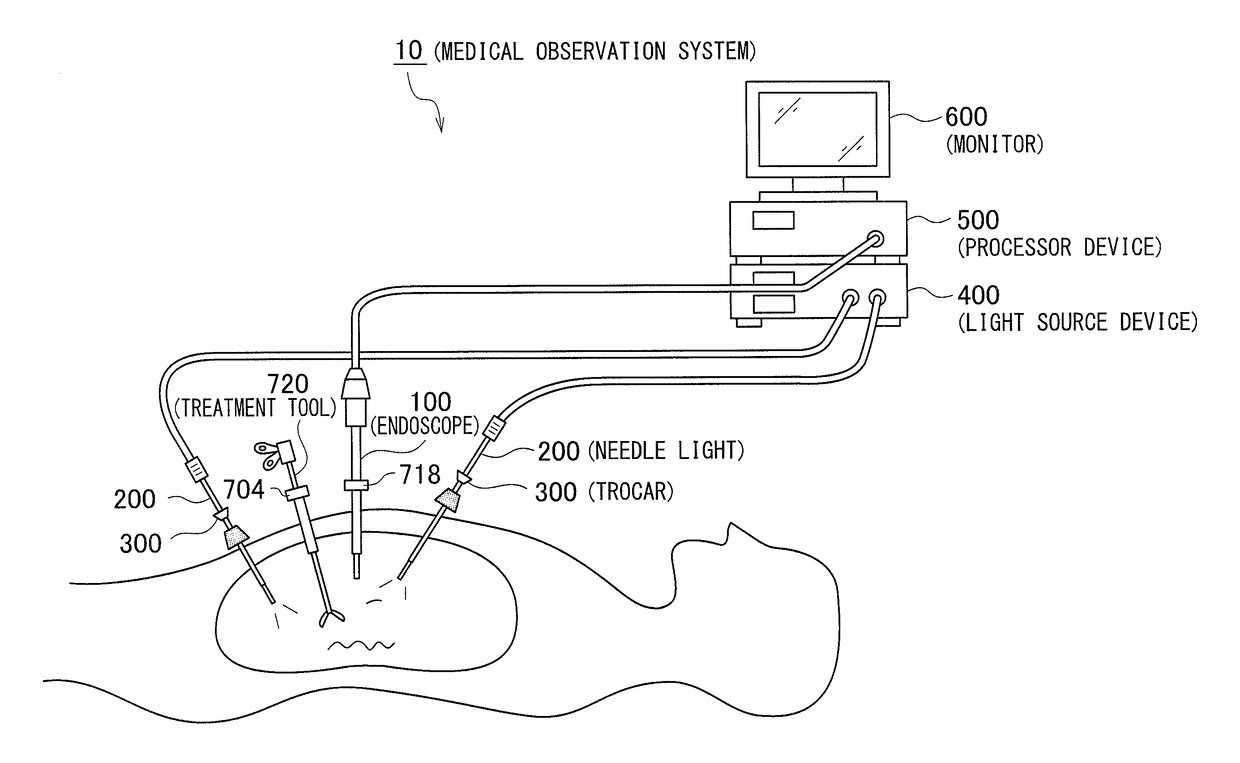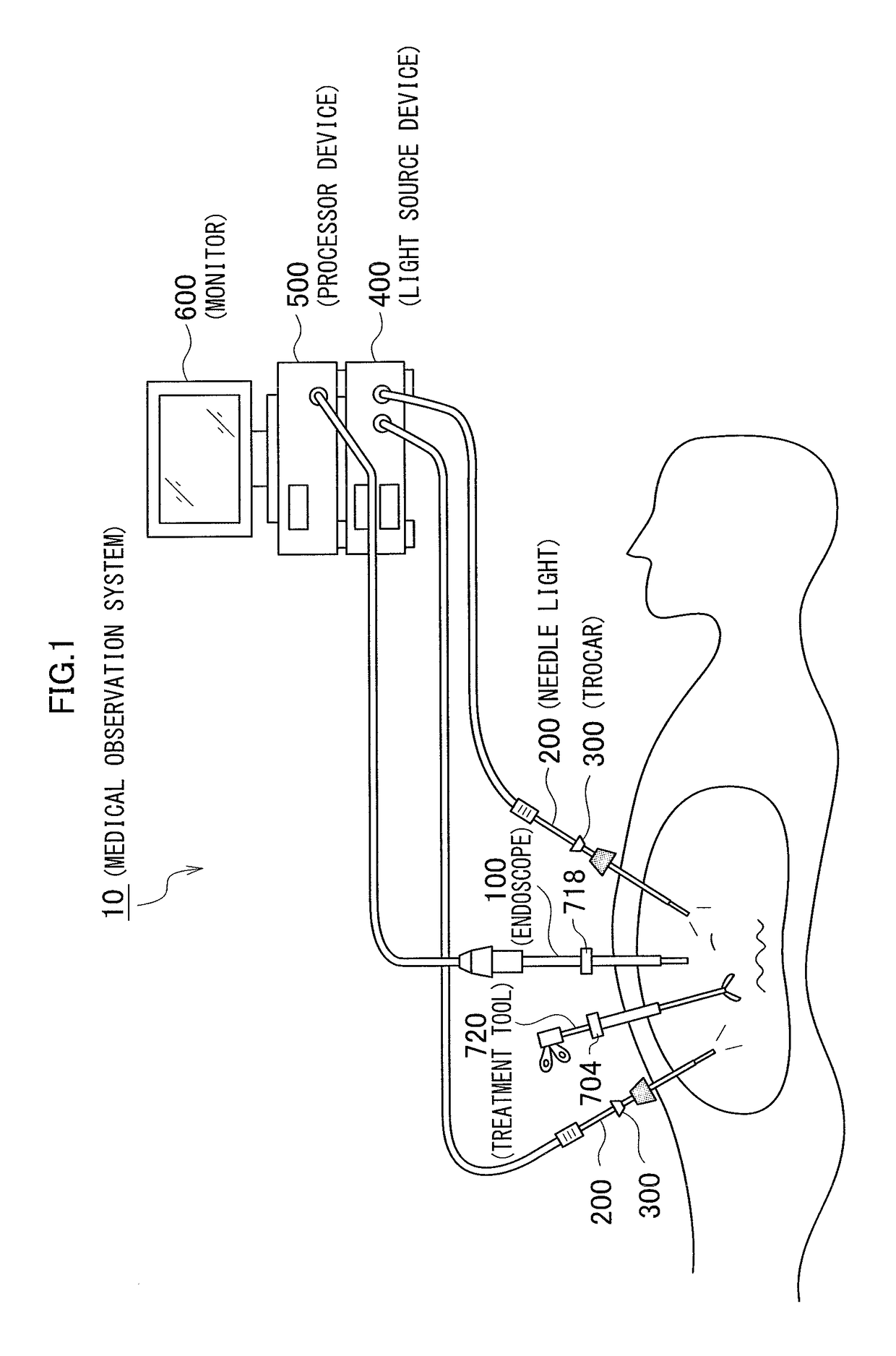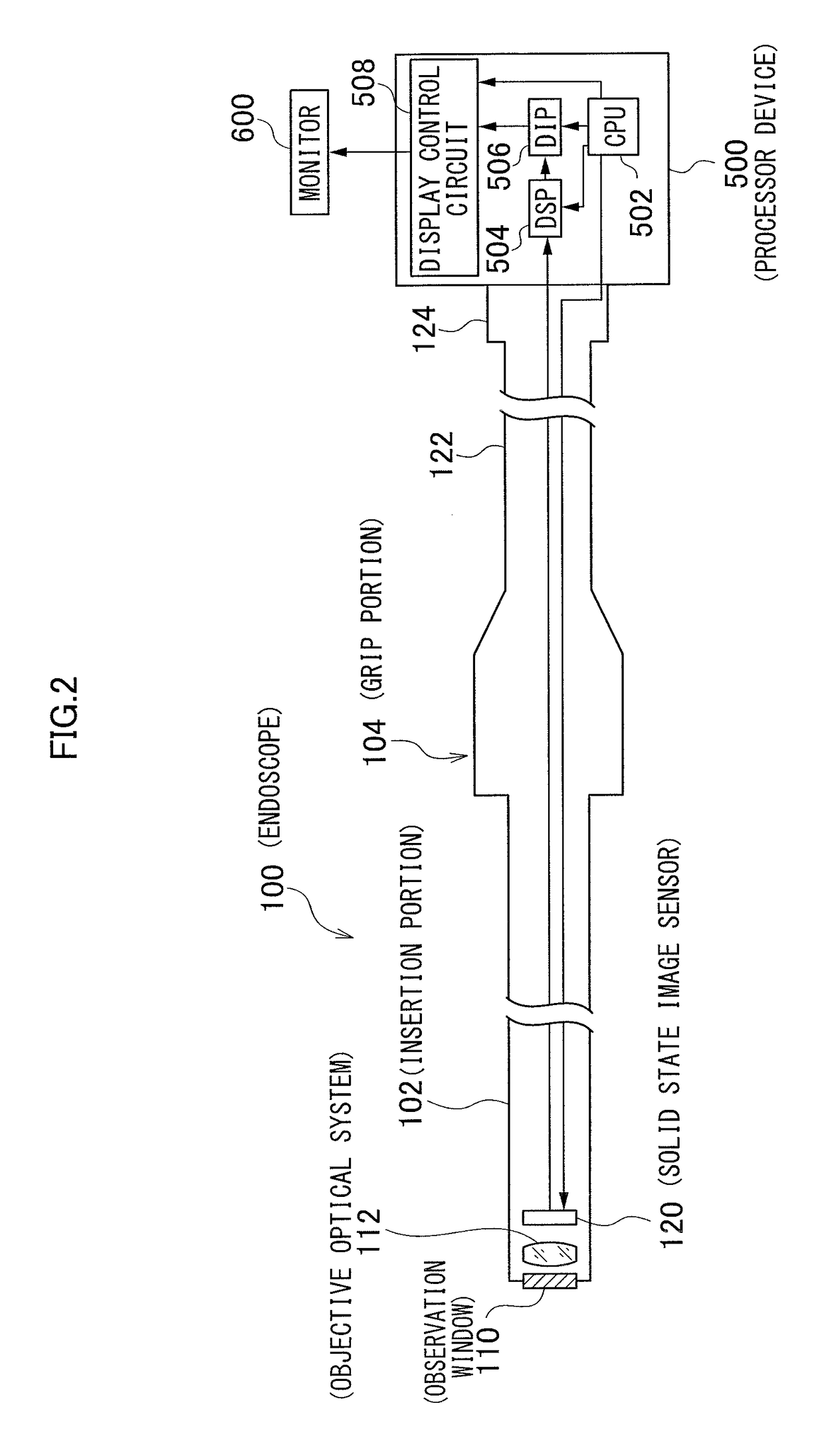Method of placing medical insertion instruments in body cavity
a technology of medical insertion instruments and body cavity, which is applied in the field of placing medical insertion instruments can solve the problems of insufficient illumination light, difficult to safely place the endoscope in the desired position inside the body cavity, and become difficult to observe the state of the body cavity with a monitor, so as to reduce the burden of patients and ensure the placement
- Summary
- Abstract
- Description
- Claims
- Application Information
AI Technical Summary
Benefits of technology
Problems solved by technology
Method used
Image
Examples
first embodiment
[Medical Observation System]
[0047]FIG. 1 is an overall configuration view illustrating one embodiment of a medical observation system. As illustrated in FIG. 1, the medical observation system 10 of the present embodiment includes an endoscope 100 configured to observe an observation target portion in a body cavity, a needle light (illuminator) 200 configured to irradiate the body cavity of a subject with illumination light, a light source device 400 configured to supply illumination light to the needle light 200, and a processor device 500 configured to generate an endoscope image. The processor device 500 is connected to a monitor 600 configured to display the endoscope image.
[Endoscope]
[0048]FIG. 2 is a schematic view illustrating a configuration example of the endoscope 100. The endoscope (electronic endoscope) 100 illustrated in FIG. 2 includes a rigid insertion portion 102 that is inserted into a body cavity of the subject, a grip portion 104 provided in a back end of the inser...
second embodiment
[0112]FIG. 13 is a schematic view illustrating a configuration example of a needle light according to a second embodiment. In FIG. 13, component members in common with those in FIG. 3 are designated by identical reference numerals to omit a description thereof.
[0113]As illustrated in FIG. 13, the insertion portion 202 of the needle light 200 according to the second embodiment has a bend portion (one way bend portion) 220 bendable in one direction provided between the rigid portion 210 and the front end portion 212. A shape memory alloy wire 222 in a linear shape is inserted into the one way bend portion 220. The shape memory alloy wire 222 has a two-way shape memory effect that is to contract its length by heating and to expand its length by cooling so as to restore its original length. The grip portion 204 has an operation switch 224 provided for ON / OFF control of current application to the shape memory alloy wire 222. The shape memory alloy wire 222 is electrically connected to a ...
third embodiment
[0116]FIG. 14 is a schematic view illustrating a configuration example of a needle light according to a third embodiment. In FIG. 14, component members in common with those in FIG. 3 are designated by identical reference numerals to omit a description thereof.
[0117]As illustrated in FIG. 14, the needle light 200 according to the third embodiment has a temperature sensor 226 built in the front end portion 212 of the insertion portion 202. The temperature sensor 226 detects temperature of the front end portion 212, and outputs the detected temperature to the CPU 410 of the light source device 400 through the signal line 228.
[0118]The CPU 410 of the light source device 400 obtains temperature change (temperature change rate) per unit time based on the temperature detected by the temperature sensor 226, and compares the temperature change rate with a reference value stored in a memory 416. When the temperature change rate exceeds the reference value as a result of comparison, the CPU 41...
PUM
 Login to View More
Login to View More Abstract
Description
Claims
Application Information
 Login to View More
Login to View More - R&D
- Intellectual Property
- Life Sciences
- Materials
- Tech Scout
- Unparalleled Data Quality
- Higher Quality Content
- 60% Fewer Hallucinations
Browse by: Latest US Patents, China's latest patents, Technical Efficacy Thesaurus, Application Domain, Technology Topic, Popular Technical Reports.
© 2025 PatSnap. All rights reserved.Legal|Privacy policy|Modern Slavery Act Transparency Statement|Sitemap|About US| Contact US: help@patsnap.com



